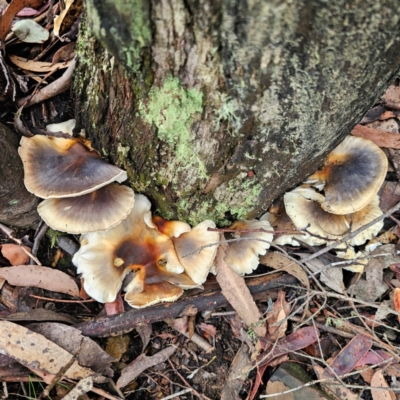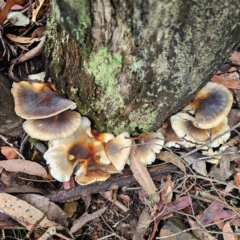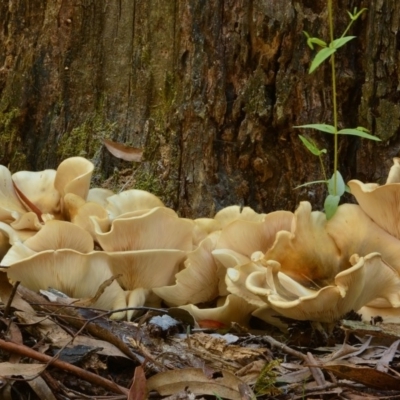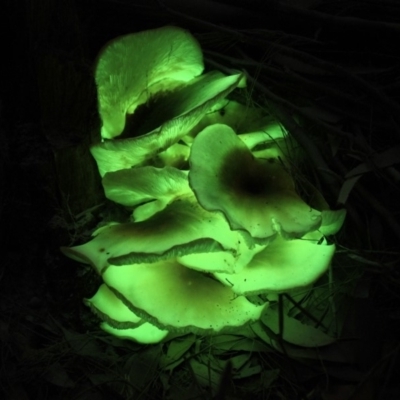Omphalotus nidiformis (Ghost Fungus)
The fruit bodies of this species are mushrooms. The cap is smooth, fan-shaped to funnel-shaped and up to 30 centimetres in diameter. The cap is dominated by brown to purplish shades, but may be creamy towards the margin. The gills are white and the stem, commonly off-centre or lateral, is white and fairly solid (up to 8 centimetres long, 4 in diameter). The mushrooms usually appear in dense clusters of overlapping caps and grow from dead wood. Often that is obvious, with clusters of caps around a stump, but sometimes the wood is buried and then the mushrooms may appear to be growing on soil.
The mushrooms are luminous. At night or in a dark room you see this: http://www.cpbr.gov.au/fungi/images-captions/omphalotus-nidiformis-0002.html. That photo shows two mushrooms, using only the light that the mushrooms themselves are producing.
Bioluminescence in the ghost fungus Omphalotus nidiformis does not attract potential spore dispersing insects is the title of a paper by several researchers from the University of Adelaide and that paper is freely available at: http://www.imafungus.org/Issue/72/11.pdf.
Omphalotus nidiformis is listed in the following regions:
Canberra & Southern Tablelands | Southern Highlands | South Coast | Greater Sydney
Species information
- Omphalotus nidiformis Scientific name
- Ghost Fungus Common name
- Not Sensitive
- Local native
- Non-invasive or negligible
- Up to 1509m Recorded at altitude
- Machine learning
Location information
-
Maps
ANBG Aranda Bushland Bango Nature Reserve Boro Brindabella National Park Gibraltar Pines Mongarlowe River Nadgigomar Nature Reserve Namadgi National Park National Arboretum Forests Nunnock Swamp South East Forest National Park Tallaganda State Forest Tidbinbilla Nature Reserve -
Places
Reidsdale, NSW Uriarra Village, ACT











































































